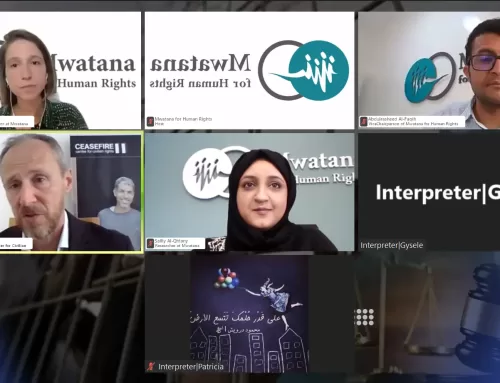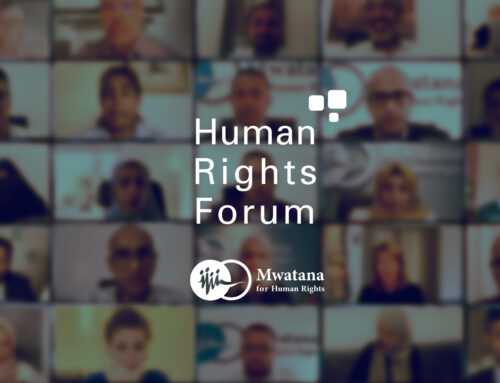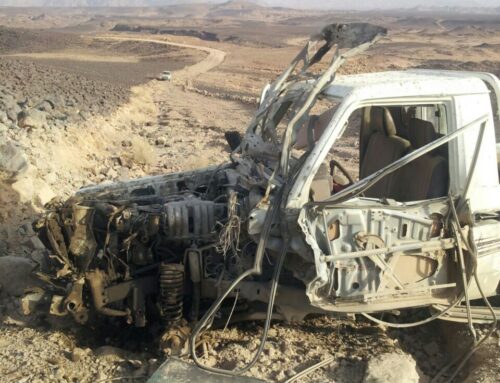
Sun – (03 Jul 2016)
Good Morning… chairs of Committees, and everybody.
I am Pleased to be here with you to share our experience in monitoring and documenting civilian harm caused by U.S Drone strikes in Yemen.
I would like to thank the European Parliament for its attention on drones issue from Human Rights perspective. This will positively contributes for the good of justice, human rights and victims.
I will start with a sentence which was said by a father of a civilian victim killed in a drone strike in Hadhramout governorate eastern Yemen, in August 2013, he said to us: “They just kill. They don’t know what havoc their missiles have caused. They are unaware of the suffering they create for our families.” This phrase: “They just kill” makes us question, Does countering- terrorism mean only killing?
Open Society Justice Initiative jointly with Mwatana Organization for Human Rights produced in 2015 a report about “Death by Drones”. The report highlights 9 case studies in which airstrikes of drones caused civilian harm and led to the killing of 26 civilians and injury of 12 others in several Yemeni provinces.
The report is at your disposal carrying details of the incidents and voices of the survivors and victims’ relatives. However, I am going to share with you some conclusions of the field research which have continued for more than a year in challenging security situations, almost entire lack of transparency over drone’s airstrikes.
It was remarkable that most of the areas targeted where civilian victims fell are remote and poor areas that lack services of any kind. Residents in a sadly scorn, exchange the ironic idea that the most technologically advanced missiles of the world have reached their houses before the cables of power. A resident in those affected areas said to us: “ “I believe that America is testing its lethal inventions in our poor villages, because [it] cannot afford to do so at any place where human life has value”.
While targeted, victims were living their daily normal life in farms, in their own way back home, or their ways to work. They believed they were safe from those drones hovering overheads, they did not feel scared as they believed that Drone is smart and knows its target well. This was the case of 14 civilians on their truck in the main road in Walad Rabei’ District, al-Baidha Governorate middle of Yemen, on September, 2012. In this incident a drone hit a car and killed 12 individuals including a pregnant woman and her 10 years old daughter in addition to other two children, and injured two others.
All the victims were civilians, most of them were workers returning homes after selling their goods and buying household supplies.
The driver Nasser Mabkhout, one of the two survivors narrated to us how the drones were closely approaching them but their confidence over precision of drones made them exchange humor and laughter about being attacked. “Our laughter was cut off by two shells“ Said Nasser .
Now Nasser describes Drones as blind and do not discriminate. He said to us “These are stupid aircrafts; else they would not have killed those innocent people”.
With the repetition of incidents that targeted civilians, reputation of drones has been increasingly worsen among people. In some cases, families of the victims believe that drones are used within internal armed conflicts through which influential figures cleared their local opponents making use of their influence in providing misinformation and talebearing.
Families of the victims protest against the lack of precautions and accusations for the targeted people who live among their local communities and participate in different activities. Furthermore, many of those targeted due to their being considered “wanted” were living their normal life and they could be arrested at any time.
For example, On January, 2013, in Al masnah , countryside of the capital Sana’a, 2 civilians were killed in a car where other two are alleged to be part of Al Qaeda. The drone strike happened when the car was about 500 meters away from a military checkpoint, raising the question of why the passengers in the car could not have been arrested instead of being killed. Brother of one of the suspected said “My brother was available and could have been summoned to any police station or any court. He would have attended, But the American officials decided to convict and kill him without any legal process.
Killing suspects while they can be arrested is like the ease of killing an insect instead of carrying and throwing it out of the window.
Killing and injury were not the only harm on the families and areas where drones incidents happened, the harm included also: inability of survivors to afford appropriate treatments, many families lost their breadwinners and described the extreme economic hardship caused by their loss. The air strikes of drones on civilian targets have also created a state of terror that some local residents fled their houses as happened on June, 2013, in Silat al-Jarraah Village, al-Baydha governorate, middle of Yemen, when an airstrike hit a house where 19 civilians including women and children lived. The strike injured five civilians including two children. Despite the fact that Yemenis consider their house and farm as part of the family, all residents of the village fled for three whole months and when they returned, they found their farm damaged.
Other invisible but very affecting impact is the deprivation of civilian survivors and victims’ families to be recognized as victims. They were defamed at the first moments of every attack through labelling them with belonging to Qaeda by government media outlets. Those families struggle and fight in defending innocence of their sons and their identities as civilians, in addition to confirming their readiness to have prosecution for their sons and approved their innocence even after their death.
Despite demanding investigation by all the families, the government has not carried out any investigation into any of those incidents, and families of those killed and injured have not received any compensation except two incidents included in Death by drones report. In these two incidents, the government acquiesced to forms of tribal pressure and threats to use violence, and thus has provided a partial compensation described by the families as “unsatisfactory” . The government, however, has completely neglected the weaker and poorer families.
Now? Let’s come to the question: what are the results of the drones’ airstrikes in the counterterrorism process? Has it made any success? Survivors and families of the victims said that these airstrikes are counterproductive, and only serve Al Qaeda and encourage sympathy with it. This is their own opinion and it is expected. Those survivors and families we have met will not turn into Qaeda due to the airstrikes of drones, they are very peaceful, but Qaeda definitely makes use of these mistakes to strengthen its argument against US and its allies in order to mobilize people for the good of its wars. In the face of that, there is an absolute absence for the military advantage made by drones. Beside, lack of transparency and disappearance of information surrounding this war from every side.
Within the frame of counterterrorism war in Yemen, there are two facts on hand: Civilian victims and increasing power and expansion of Al Qaeda. Al Qaeda now is controlling areas and practicing the role of a defacto authority and their elements now are there among civilians more than ever. I am not saying that increasing power of Al Qaeda in Yemen is because of drones’ air strikes, it happened due to state collapse, absence of security and good governance, lack of development and rule of law, but it is a failure sign of the “Killing” as a technique of combating terrorism.
In this context I would like to confirm that Al Qaeda elements in the different Yemeni areas where we conducted our research were rejected in the local communities and even when they control an area, it is a control by force making use of the Absence of state and its institutions.
As you may know the sky of Yemen have been covered with another kind of air jet fighters since March 2015, the Saudi-led coalition air fighters in addition to shells by local parties to the conflict. We have documented hundreds of civilians killed and injured and despite all that we have not forgotten civilian victims of drones as they are still there and because wars accumulate victims and deepen their misery but cannot eliminate them. Wars also receive courage of killing and arrogance of power from each other and from negligence to victims of such wars.
Will stop here !
Thank you for your listening.
* Radhya al-Mutawkel, head of Mwatana Organization for human rights, A Yemeni independent Organization uses an investigative research methodology to produce reports, press releases and documentary films.
Date: 30 June 2016





